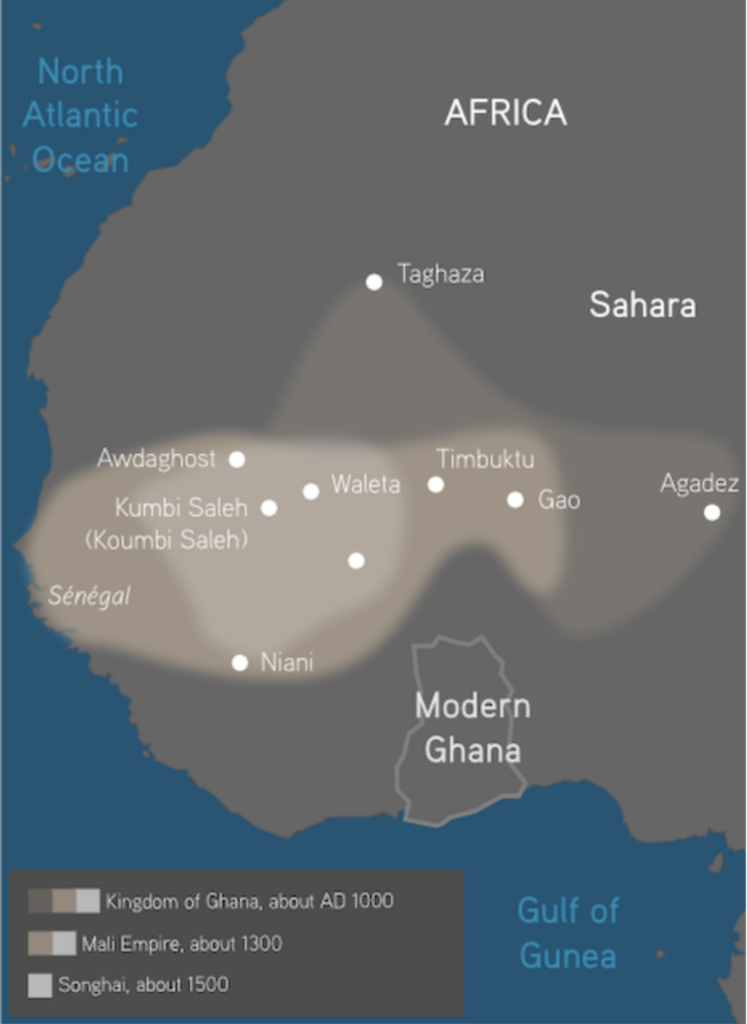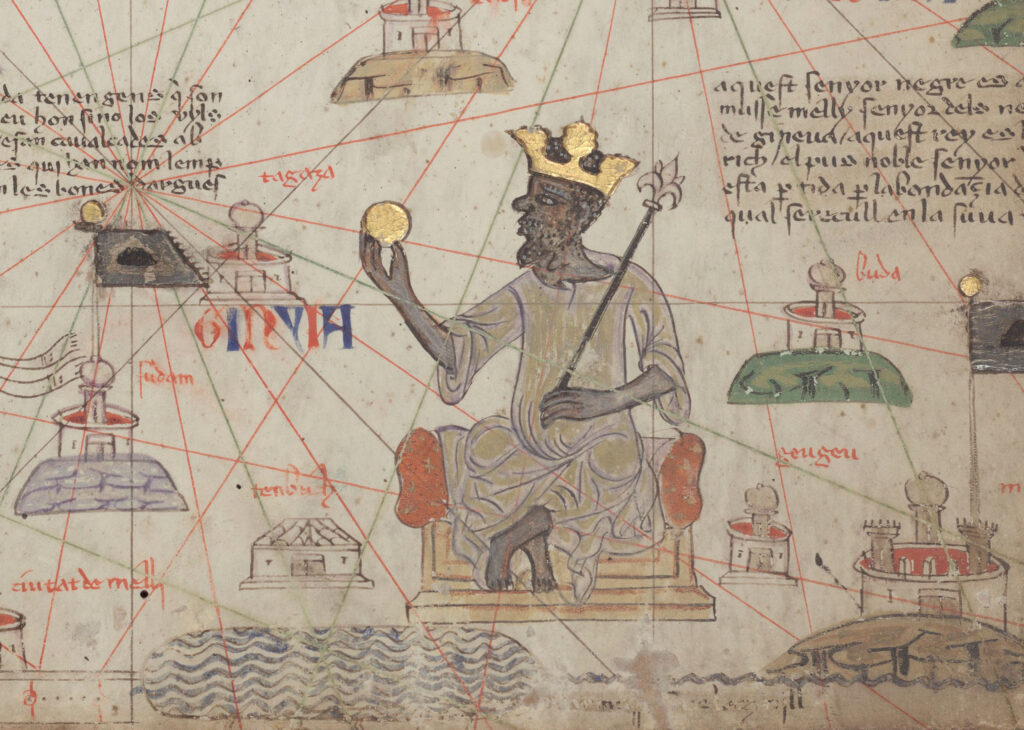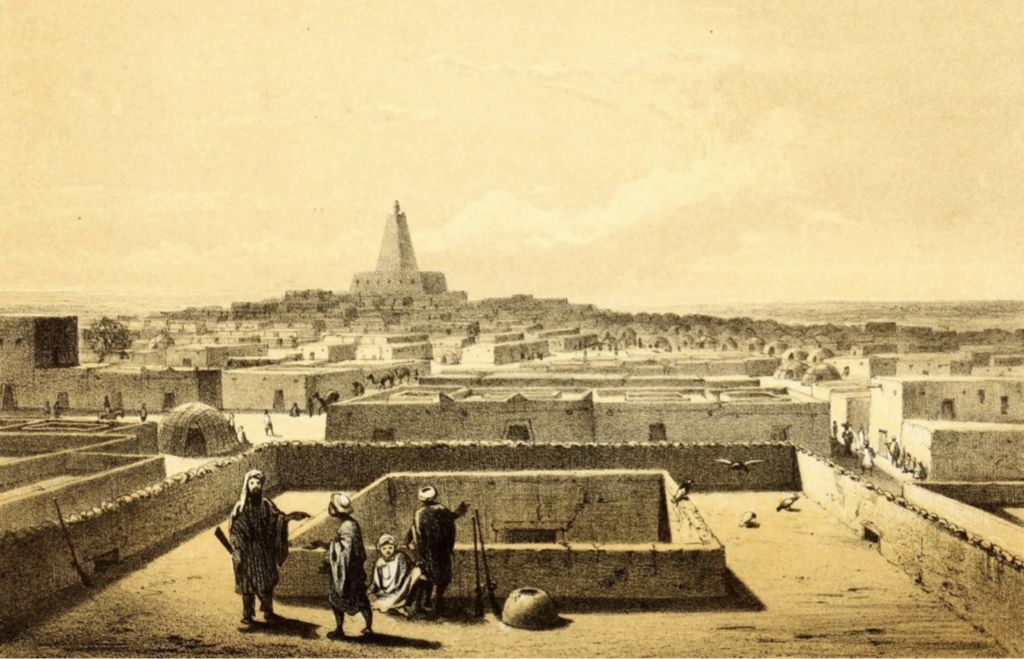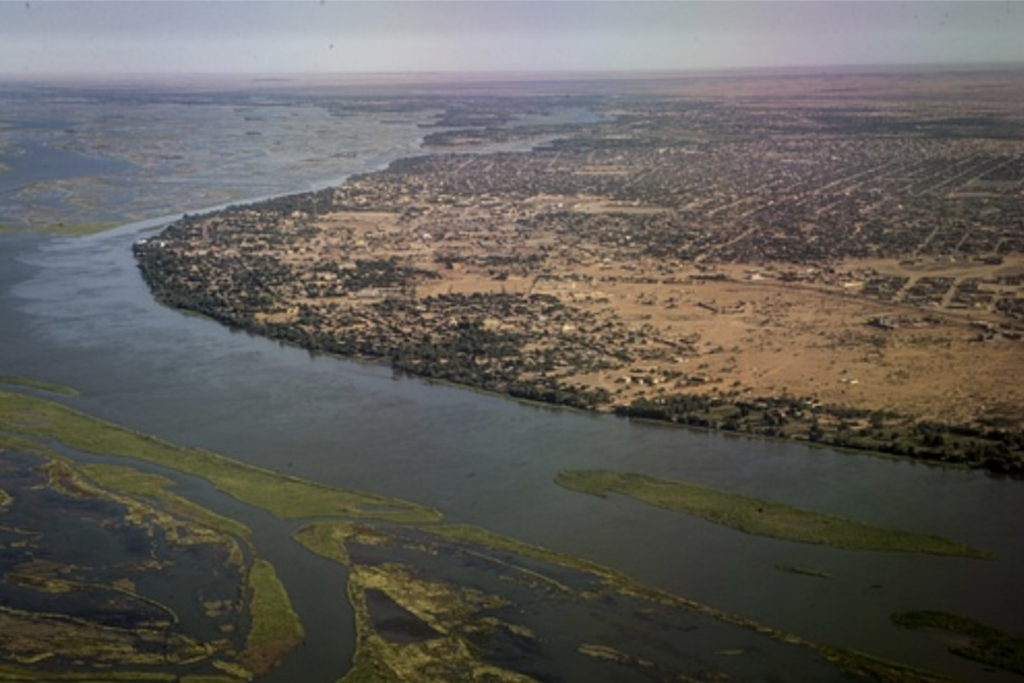by Lauren V. Williams
When I was in grade school, we tended to learn the same things over and over. The British Empire rivaled with the French. The Americans overthrew the British. Abraham Lincoln united the country. Although these parts of history are important, the refusal of the educational system to expand its curriculum to other parts of the world reinforces the idea that White history is the only important history. Even during Black History Month, curriculums overwhelming focus on Black trauma, such as slavery or the assassination of Dr. King. American education rarely ever explores – in fact, it’s almost as if it purposely suppresses – the great civilizations of Black empires. The West African empires of Ghana, Mali and Songhai illustrate that Black History is more than just subjugation. It also includes kingdoms, wealth and prosperity.
The Ghana Empire, which ruled from 500 – 1240 CE, was known as “The Land of Gold” in its time. The empire had three major gold fields in its territory. This gave them a monopoly on the mineral and the ability to become one of the major traders in the Old World. While their government kept the gold nuggets as one of its primary sources of wealth, gold dust was used to trade salt, ivory, iron tools, weapons, furniture and more across the Sahara.
The prosperity of the country was centered in the city of Koumbi Saleh. Nobles, officials and the king lived a grand palace complex in the heart of the city. Although its population of about 20,000 seemed small compared to other nations, maintaining the city was an astounding architectural feat. Koumbi Saleh was in the Sahel, the land beneath the Sahara Desert. Although drinking water was scarce, the Ghanaians built a system of wells to support its people and irrigate its plants.
The Ghana Empire’s grand army resisted invaders, such as the Almoravids, and other threats to its territory for hundreds of years. Some accounts, although unconfirmed, say that the empire had 200,000 soldiers, 40,000 of whom were archers. It wasn’t until the climate changed, and agriculture suffered, that the Ghana Empire declined. As political infighting consumed the nation, another West African power rose.

The Mali empire, from 1240 – 1645 CE, was established by King Sundiata Keita, also known as “The Lion King”. King Sundiata invaded the capital of the Ghana Empire in 1240 and united several smaller kingdoms across the Upper Niger River. He and his well-trained imperial army began the campaign that expanded the Mali Empire for over four centuries. The country maintained its wealth through gold dust, salt deposits and its location in the middle of trade routes. Its prosperity made its next great ruler into the man who may still be the richest man in history.

Although Mansa Musa I doubled the Mali’s Empire territory during his reign from 1312 to 1337 CE, his greatest impacts on his nation may have been cultural. Mansa Musa developed Timbuktu and Gao into centers of knowledge. He built Islamic learning centers, schools, and universities. One of his libraries was dubbed “the grandest library in Africa”. Mansa Musa summoned architects from all over the Middle East and the African continent to design new buildings for his cities. Under Mansa Musa’s rule, Mali became a multilingual and multiethnic kingdom at the height of its wealth.

Mansa Musa is also known for his 1324 pilgrimage to Mecca. Tens of thousands of people, dozens of camels and hundreds of kilograms of gold traveled with him. As he passed the villages across the continent, he gave away all of his gold. In fact, he gave away so much gold that he caused inflation in Egypt for the next 12 years.
The Mali Empire declined after Mansa Musa’s death in 1337. Other trade centers developed, civil wars ensued and eventually, the Songhai Empire took its place.
The Songhai Empire dominated West Africa from the mid-1400s to 1591 CE. Although the Kingdom of Songhai began in the 9th century, it wasn’t until King Sunni Ali began a sustained campaign of territorial expansion in 1468 CE that the Songhai became an empire. King Sunni developed an armored cavalry, a naval fleet and an efficient strategy of overwhelming his enemies with remarkable speed. In the 28 years of his reign, he waged 32 wars. He won all of them. He was nicknamed “Sunni the Merciless” because, according to the Timbuktu chronicle Tarikh al-Sudan, he was “always the conqueror, never the conquered”.
The Songhai Empire consolidated its power through centralized government through its capital in Gao. The imperial council included a finance minister, an admiral that oversaw regional governors, a general, and a minister of agriculture. More minor ministers presided over forests, wages, property, foreigners and purchases. The most powerful local officials included the police and the tax collector.

Major trade ports continued to be cultural and urban centers. The people of Timbuktu lived in stone houses with large public squares filled with markets and mosques. The city remained as a center of scholarship and Islam. It was a symbol of the success of the Songhai Empire until the empire’s eventual fall in 1591.
The empires of Ghana, Mali and Songhai are highlights of the true story of human history. Every area of the world has had prosperous civilizations. We can’t ignore the advances of Mesopotamia, vastness of the Aztec Empire or power of the Mongols. Empires and ethnicities rise and fall. To believe that one group is the true master of all is to ignore over 5,000 years of written human history. And it does a disservice to our youth to pretend otherwise.
Sources and attributions
“Africa Timeline.” Ancient History Encyclopedia. https://www.ancient.eu/timeline/africa/.
Baker, David. “The Ghana Empire (article).” Khan Academy.
Cartwright, Mark. “Songhai Empire.” Ancient History Encyclopedia. March 8, 2019.
www.ancient.eu/Songhai_Empire/.
National Geographic Society. “Mansa Musa (Musa I of Mali).” National Geographic Society.
March 4, 2020. www.nationalgeographic.org/encyclopedia/mansa-musa-musa-i-mali.
National Geographic Society. “The Mali Empire.” National Geographic Society. August 19,


